Top 20 Military Uniform Patterns
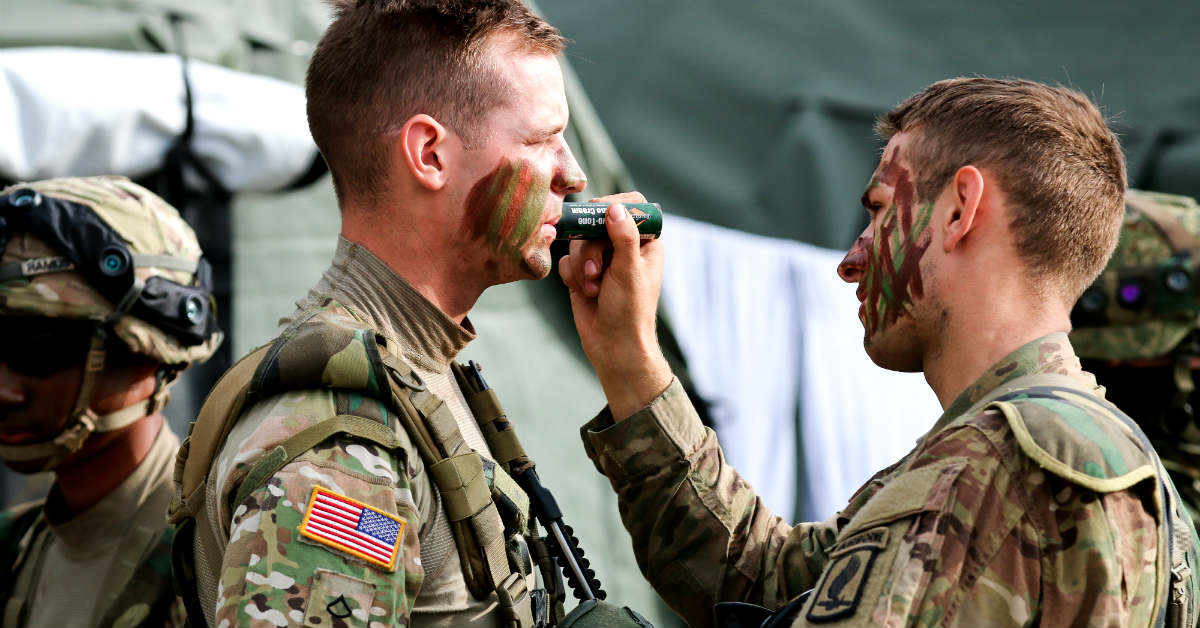
ACU Universal Camouflage Pattern
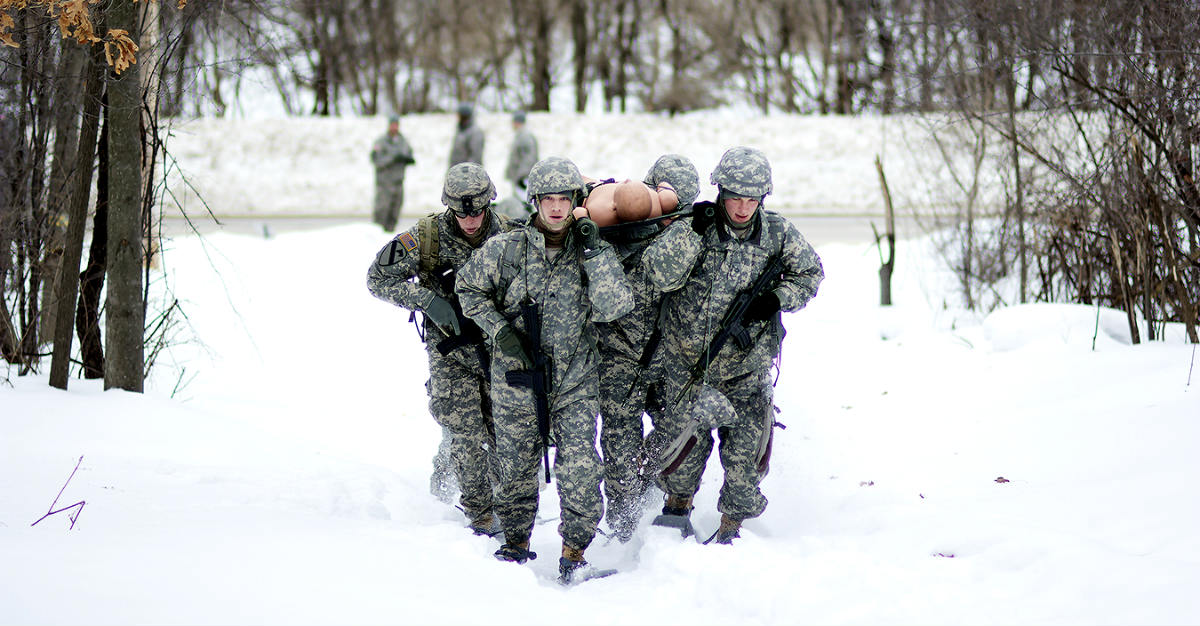
The Army Combat Uniform’s Universal Camouflage Pattern, also known as ACUPAT, is one of the most revolutionary and contentious military camouflage patterns of all time. The goal of ACUPAT was simple yet bold – develop a truly universal digital camo pattern for the ever-changing battlefields of the 21st century. ACUPAT initially performed well in stateside testing against both soldier detection and night vision equipment. These trials were chiefly held at the US Army’s Natick Soldier Center, which may have affected the outcome.
However, some of its flaws began to show on deployment. In jungle or tropical environments, the pattern lost a lot of its touted efficiency. Likewise, some urban settings partially defeated ACUPAT’s ability to blend in. Popular theories state that the current long-term series of deployments in the Middle East may have colored the project, creating a pattern designed with that environment in mind. ACUPAT was successful in that setting, however, and set a new standard for what camouflage could be.
Desert Night Camouflage

Perhaps the first digital camo pattern to see widescale combat is the Desert Night Camouflage (DNC). A two color pixillated pattern, it was one of the first military camouflage designs intended to thwart night vision devices on enemy vehicles. Did it work? Well, that depends on who you ask. Informal testing by U.S. Marine snipers in Kuwait during the Gulf War found that DNC pattern was no more difficult to see at night than any other pattern. In fact, they found that with some night vision equipment, DNC was actually more visible against the desert backdrop. The pattern was thus short lived, and no specific night time camouflage pattern has been adopted since then. A great deal was made in military circles about the money wasted on this failed pattern.
However, DNC served a critical role with US and British special forces during the biggest war of the 1990s and will forever be an important military pattern in history.
Pantera
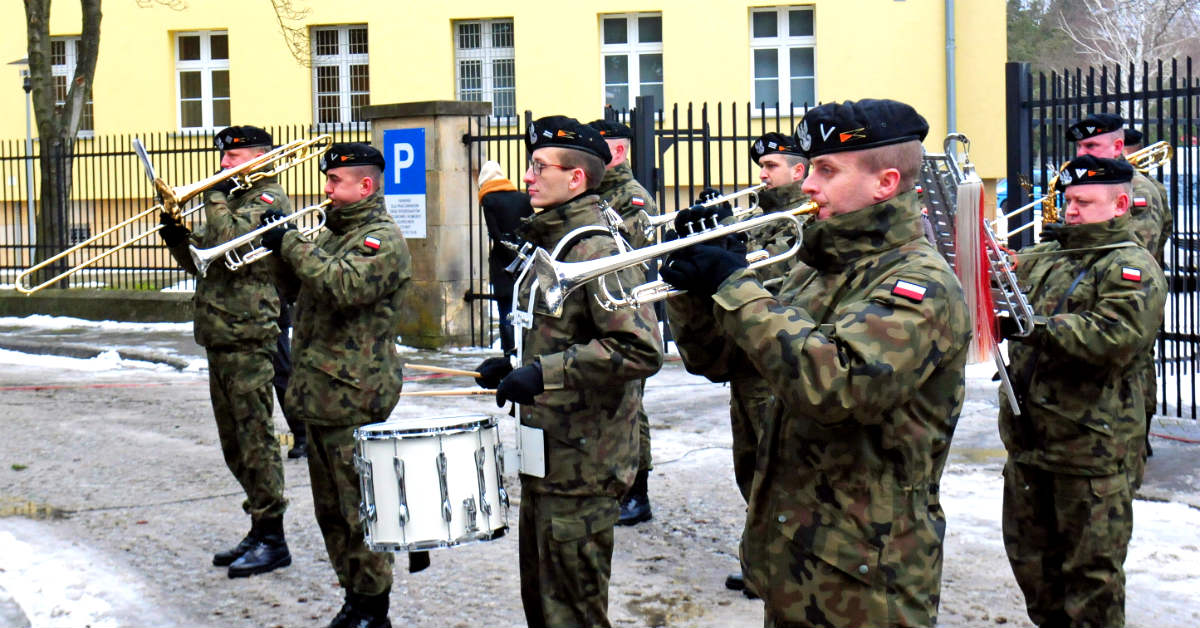
More properly, this pattern is known as Wz. 93 Pantera, and it is the standard camouflage pattern of the Polish Armed Forces. Initially created as a successor to an older pattern for the Polish special forces, it became the standard military camouflage pattern in 1993. Pantera quickly saw battle testing during the conflicts in Yugoslavia, where Polish forces played a key role in coalition efforts to stop the genocide. Its performance on the battlefield was effective due to its unique design considerations. Rather than adopting a blending camouflage approach, Pantera is a disruptive pattern. This works by breaking up the outline of the wearer rather than blending with the color pattern behind it. In the mixed terrain of the Balkans, this provided many Polish troops with an invaluable edge.
TAZ 90

Switzerland has a long military history and a proud sense of independence. So much so that they avoided Nazi invasion during the Second World War despite a land border with Germany. The search for a new camo pattern came in the 1980s with the goal of replacing the venerable Alpenflage and Flecktarn designs which had been a mainstay for decades. This, in part, reflected Switzerland’s changing role in the world. Abandoning centuries of neutrality, the nation found itself part of UN missions and EU military efforts. A new military camouflage pattern that was versatile enough to meet those requirements was a must. Enter TAZ 90. The basic pattern was versatile enough to work with all common environments in Switzerland. However, the basic pattern with a shift in color scheme also works very well in desert terrain, making it much easier to supply troops deploying beyond the borders of their mountain homeland.
SS Leto/Partizan
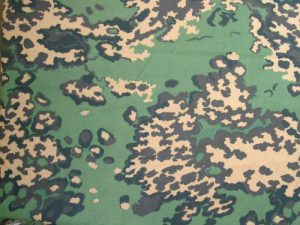
“Leto” is Russian for summer. Introduced in 2004 as a digital pattern summer uniform, the SS Leto pattern is derived from the oak-leaf pattern worn by Nazi SS troops during the Second World War. Apparently, captured German uniforms on the Eastern Front impressed Soviet commanders, and they used that inspiration when the time came for a new camo pattern. It’s an interesting design, intended to mimic the unique woodland terrain of the Russian steppes. A green background carries a variable tan and loam pattern which blends perfectly with its native environment. While not as versatile as some of the other military camouflage patterns, it performs admirably enough to warrant use by the Russian special forces.
Estonian Digital Pattern
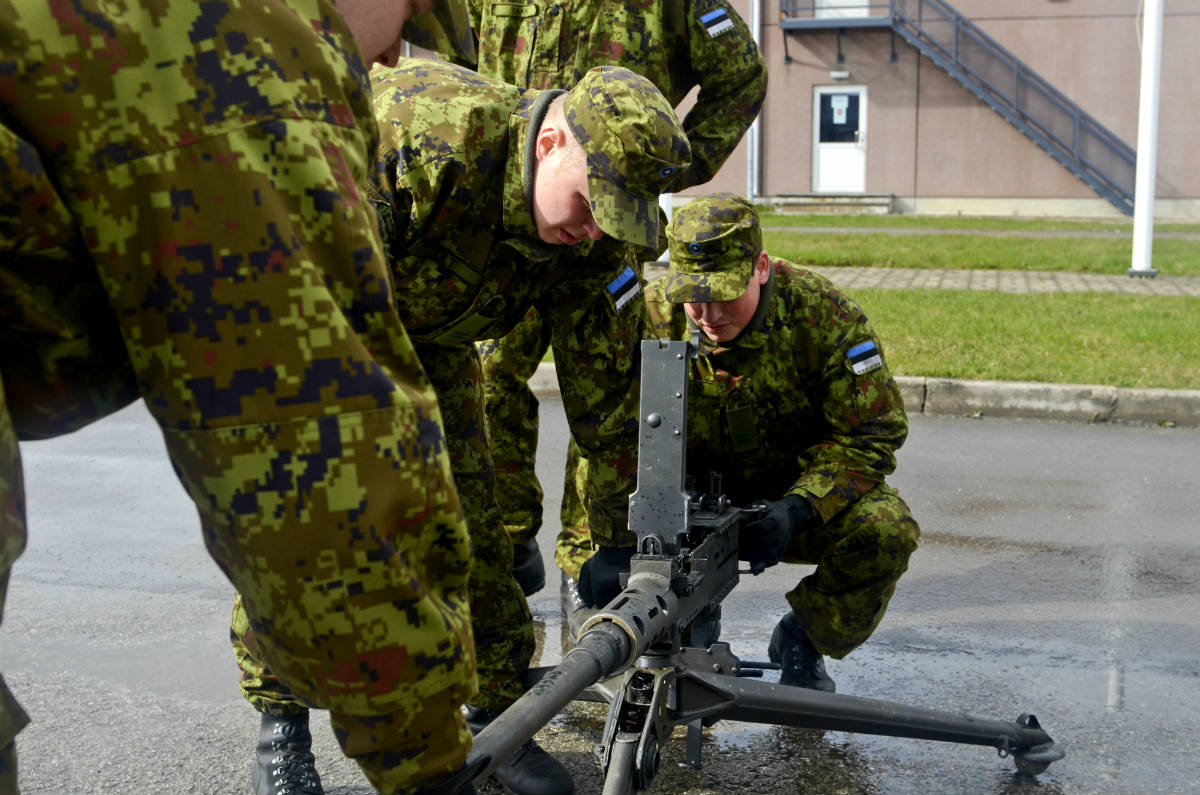
Since the dissolution of the Soviet Union, Estonian military camouflage has always taken its own path, opting for tri-color designs with swirling, amoeba-like patterns. As Estonia was quick to take its place on UN peacekeeping missions, the armed forces quickly adopted a variety of patterns for woodland, desert, and urban operations. Like most nations, Estonia wanted a more modern and versatile camo pattern, preferably something digital. However, they raised a few eyebrows in 2006 when they released Estonian Digital Pattern, which bears more than a passing resemblance to CADPAT and MARPAT. While no lawsuit was filed, the situation raised a few questions about the origin of Estonia’s otherwise effective camouflage pattern.
M90

M90 is the camouflage pattern currently in use by the armed forces of Sweden. A modern abstract camo pattern intended for a wide variety of terrains, M90 currently comes in woodland, desert, and jungle patterns. The latter were developed along with a lightweight hot-weather uniform in response to Sweden’s role in various international peacekeeping task forces and other overseas deployments.
While an urban pattern is still under discussion, the current standard pattern works well in part due to its unique use of color. Swedish researchers found that blacks and grays make patterns more distinct, so they opted for light blues instead. This color blends better in low and variable light conditions, providing a huge advantage to the wearer. As the design first appeared in the 1980s, considerations like these make M90 a camo pattern far ahead of its time, explaining its continued use and ongoing success.
MO5
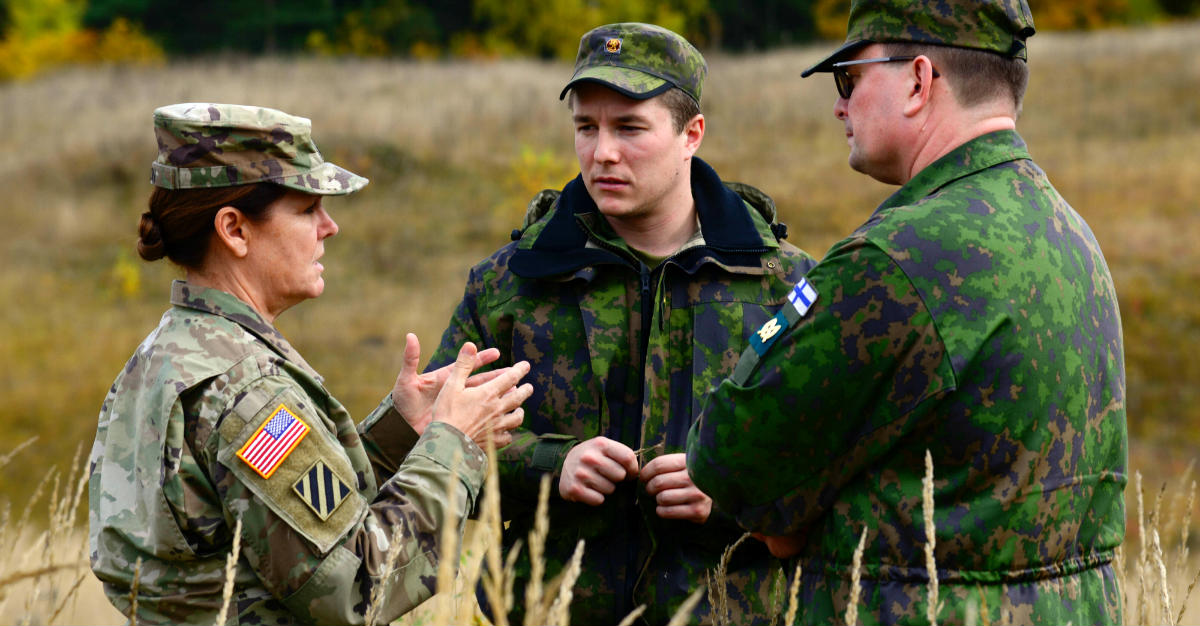
The current camouflage pattern in use by the Finnish Armed Forces, M05 wasn’t even available to the public until 2016. Finland’s geography necessitates a different approach to camouflage. Rather than terrain, the changes are seasonal—M05 comes in a woodland pattern and a winter pattern for when the snow starts to fall. However, plans are in the works to introduce urban camouflage versions for use during peacekeeping missions and other deployments. A hot-weather version for overseas work has been available for a couple of years now.
M05 is also the subject of some international controversy. It seems that a Russian military camouflage pattern bears enough of a resemblance that a copyright lawsuit is pending.
PenCott GreenZone
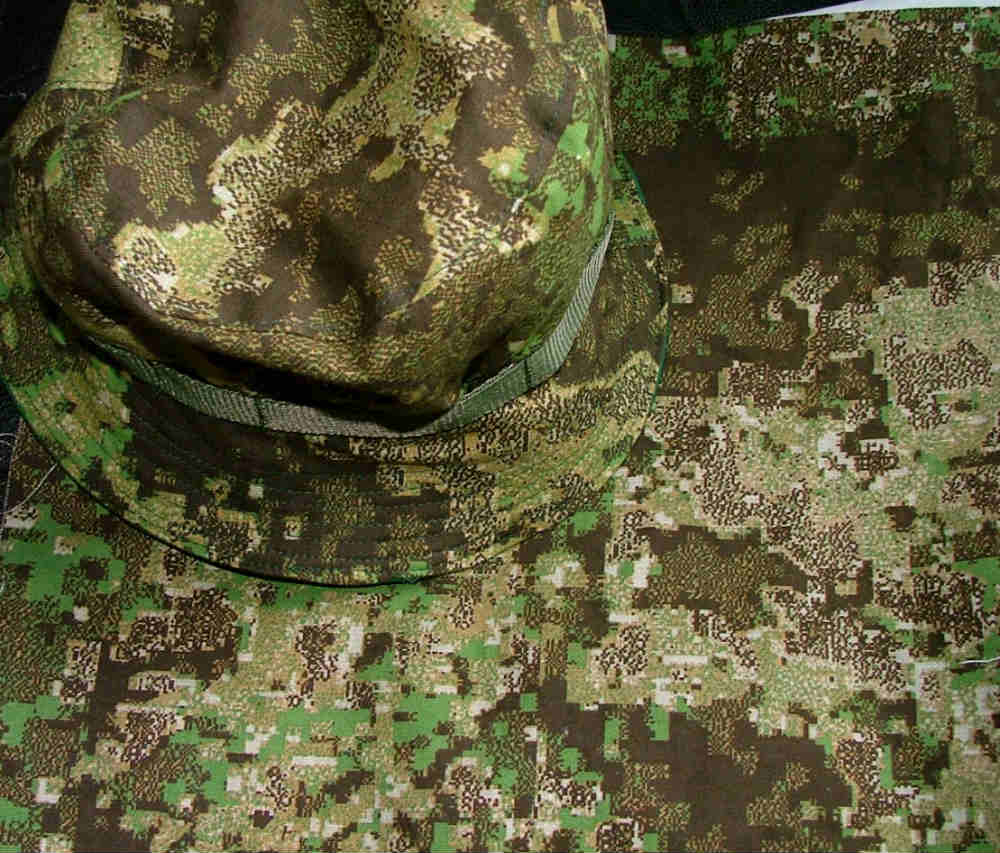
The UK company Hyde Definition has developed camouflage patterns for militaries around the world. So it’s a little surprising that their most popular pattern hasn’t seen military use yet. PenCott Multi-Environment Camouflage takes pixillated camo to the next level. Using just four colors with smaller pixels and better shading and blending, PenCott GreenZone offers true omnidirectional coverage, pattern disruption, and low light performance while remaining affordable to manufacture. In addition to the woodland GreenZone, other patterns are available: Badlands (Semi-Arid); Sandstorm (Arid), and Snowdrift (Arctic). While none of them have been battlefield tested by a military force, they’re performance in civilian hands speaks volumes.
EMR Digital Flora
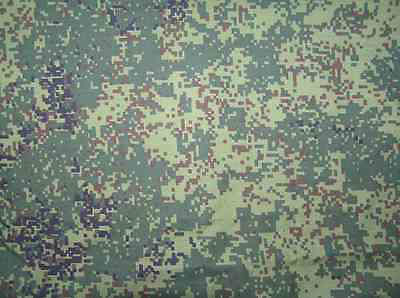
The Russian pattern EMR Digital Flora appears to have made its first appearance in 1998. This suggests that the digitized pattern is a response to similar developments among NATO states. However, once the pixels are taken into account, the overall pattern looks a lot like older Soviet “sunray” camouflage designs, suggesting that this is the outgrowth of an older project. Or, perhaps the Russians started experimenting with digital camouflage much earlier than previously thought.
EMR also comes in a number of versions, with a woodland type pattern being the most common. A lighter color scheme, oriented toward browns, tans, and light greens, is also in use for desert operations. EMR is also popular in Central Asia and used by a number of forces there.
Disruptive Pattern Material (DPM)

In both its woodland and desert patterns, DPM was the standard camouflage pattern of the British armed forces from the late 1960s until 2011. Modeled in part on the hand-painted military camouflage used by the famous Commando units of the Second World War, DPM was designed, as the name suggests, with pattern disruption in mind. By making the outline of the wearer more difficult to see, DPM allows for an adaptive camouflage which works well in a variety of terrains and settings. While changes to the pattern were made over the years in order to adapt to new battlefields and requirements, the basic DPM remained in service until the implementation of MTP. In fact, DPM has yet to be fully phased out, as some reserve units still use the pattern. Given its additional overseas popularity, DPM is going to be making appearances for some time to come.
Desert Camouflage Uniform (DCU)

Inspired in part by the DBDU pattern, Desert Camouflage Uniform was its immediate successor. It was first issued experimentally in 1990 in order to test the unique properties of its “coffee stain” pattern. The name is a bit of a misnomer—while shades of brown and tan abound, elements of pale green also help disrupt the outline and blend the wearer with the background.
DCU pattern is designed specifically for open, flat desert warfare. The DBDU made the assumption that rocky uneven terrain would host the battle, rather than the more expansive deserts of Iraq and Kuwait. Recognizing this need, the DCU pattern went into issue in 1992 and was force-wide by 1995. They were the go-to uniform for desert operation until the digital patterns of the early 2000s came along.
Desert Battle Dress Uniform (DBDU)
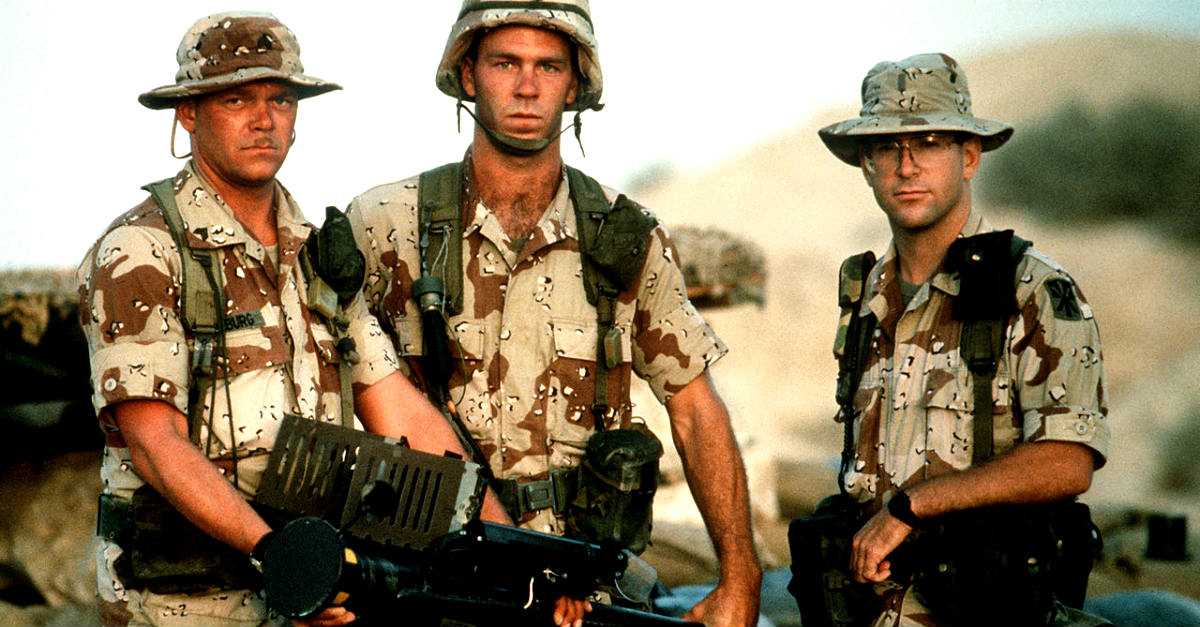
The Persian Gulf War was a major shift for the US military. The Cold War had ended, and major operations were moving from Europe to the Middle East and beyond. The M81 Woodland BDUs were less than optimal in these new environments, and American troops needed new uniforms and a new military camouflage pattern to better meet the mission at hand. Enter DBDU. The Desert Battle Dress Uniform had been originally developed in 1962, but wasn’t put into broader issue until the large scale deployment to the Middle East during Operations Desert Shield and Desert Storm. The unique “chocolate-chip” pattern made use of the particular nature of desert light and shadow on the uneven sand and rock surfaces found through the region. Though it has since been discontinued, the pattern provided the impetus for later digital camo research.
Tigerstripe
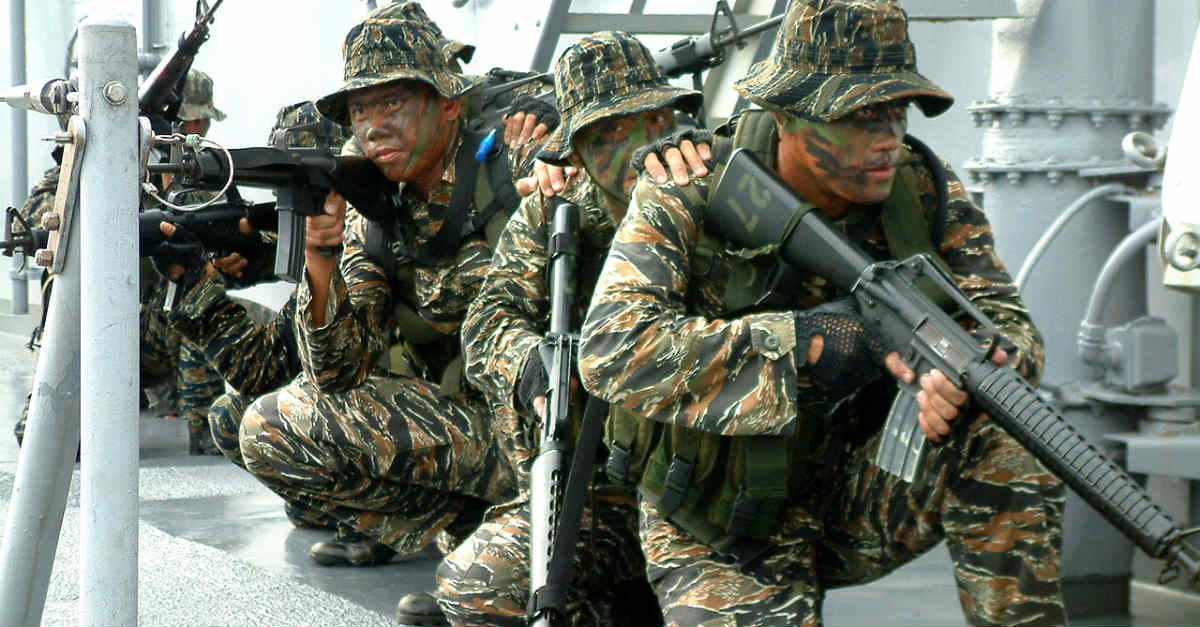
Tigerstripe is technically a catch-all term referring to a family of military camouflage patterns used by the United States during the 1960s and 1970s. The distinctively aggressive pattern was developed to meet the unique needs of US troops in Vietnam. Fighting in dense jungle changed the ways in which camouflage and olive drab uniforms functioned, and American soldiers and Marines needed a new pattern to keep them concealed.
Perhaps the most interesting thing about Tigerstripe is that it was never officially adopted by the United States. Service personnel, both US and ARVN, grew to love the pattern’s unique look and effectiveness, and had local tailors make uniforms using the pattern. It remains popular worldwide, with the armed forces of the Philippines and Thailand still putting it to use.
Flecktarn
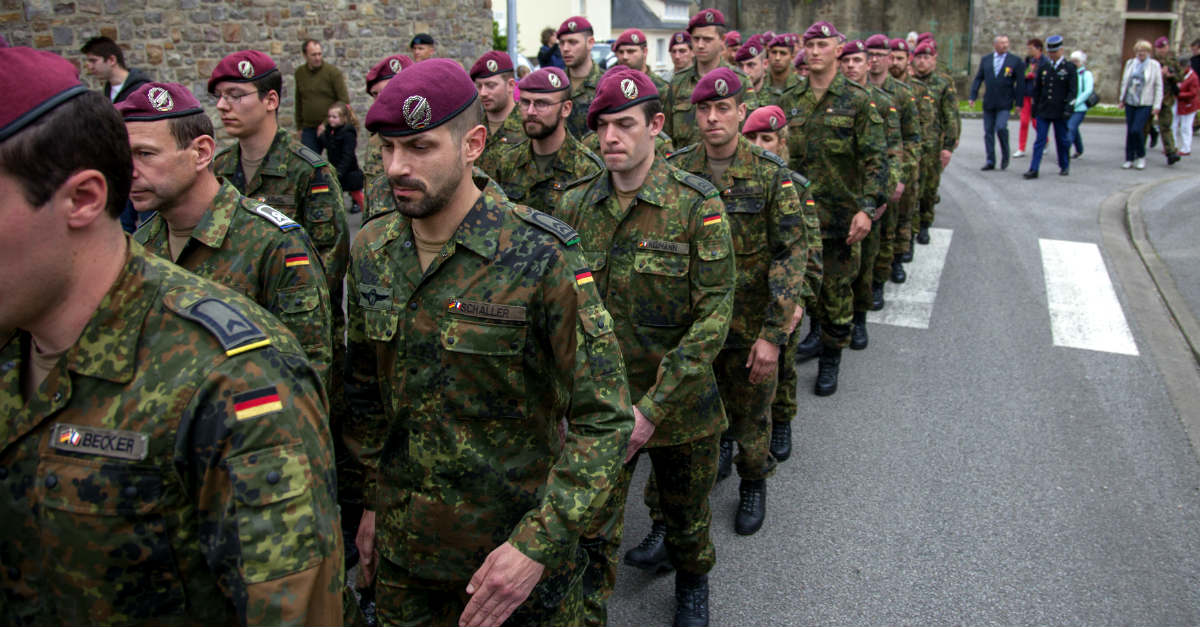
“Flecktarn” is German for “mottled camouflage”. It’s also known as Flecktarnmuster or Fleckentarn and is a catch-all term for a variety of camo patterns. The most common is a five-color pattern made up of dark green, light green, black, red brown, and green brown. Flecktarn was a huge step forward in camouflage techniques and technology, and some version of it has been in use by German troops since before the Second World War.
Modern Flecktarn came into being in the late 1970s, when West German troops recognized the need for a new pattern to replace the solid olive drab uniforms that were then in use. Flecktarn became more prominent in 1991, when it became the uniform pattern of a reunified Germany. It’s also been a success internationally, with nations as far away as India using versions of Flecktarn in their uniforms.
Multi-Terrain Pattern (MTP)
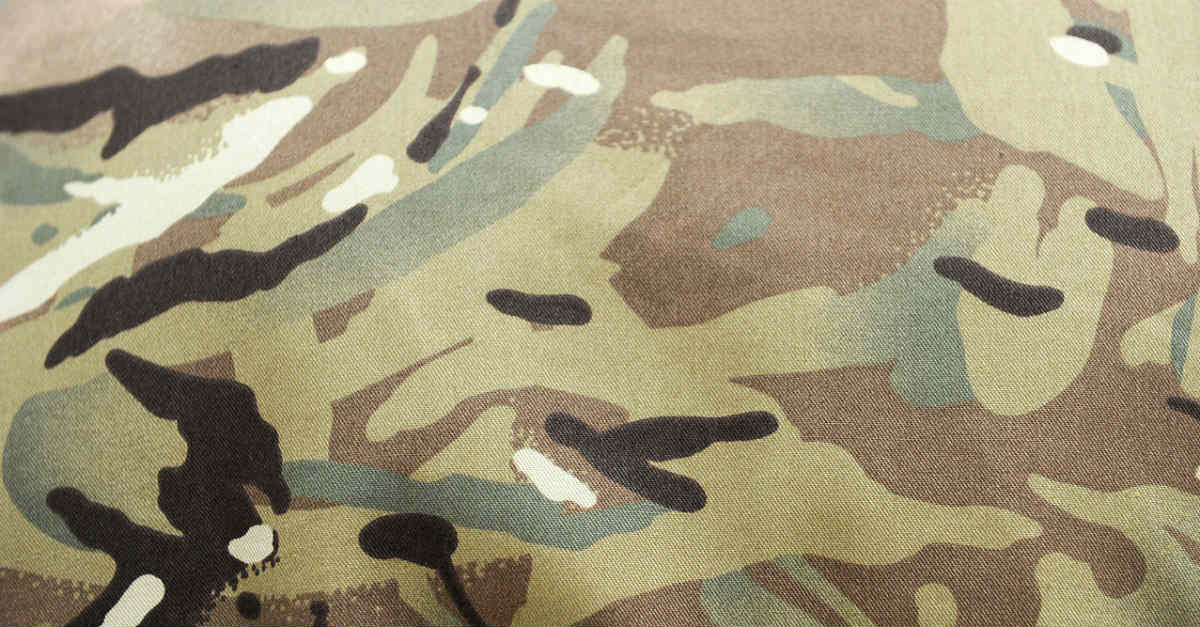
Since it replaced DPM in 2011, Multi-Terrain Pattern (MTP) has been the staple camouflage pattern of the British armed forces. As with MARPAT, CADPAT, and MultiCam, MTP is designed to work in a wide variety of settings and environments, giving UK troops the versatility to meet missions around the globe. However, it breaks with many modern military camouflage designs in that MTP is not a digitized pattern but rather a more traditional mix of colors and shapes. Inspired by the experiences of British troops in Afghanistan, MTP was field tested extensively in that country as well as in the UK, Cyprus, and Kenya. Evidently MTP was up to the challenge, as it succeeded in the vastly different environments found in those places. MTP is also a success internationally, as it is currently in use by the militaries of Malta and Tonga.
CADPAT
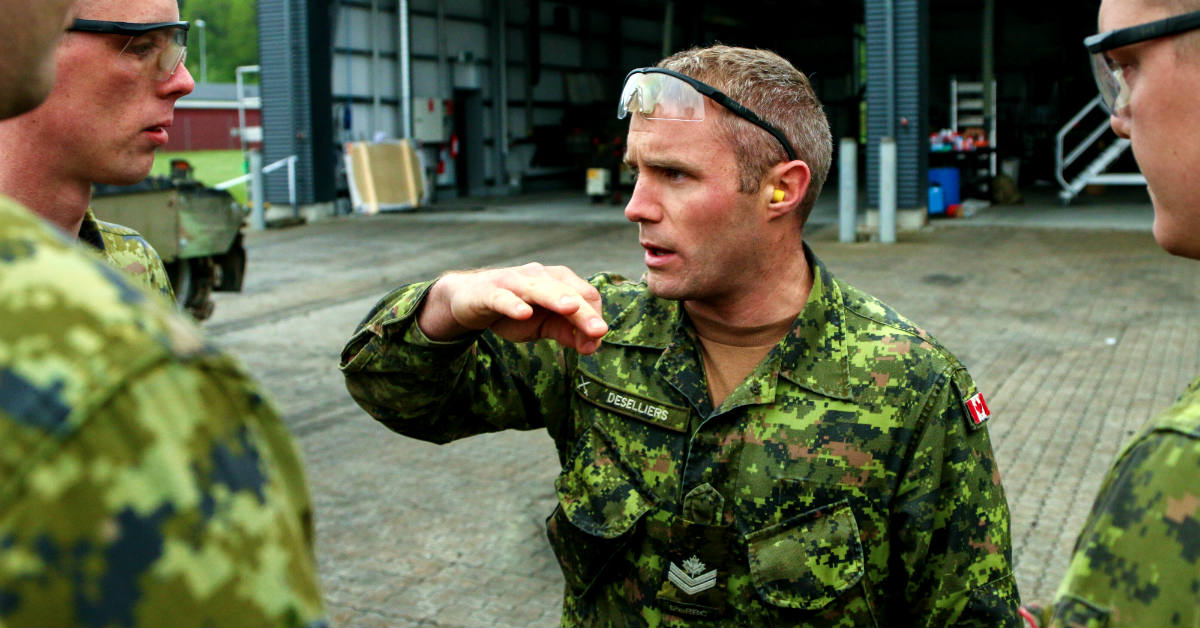
The inspiration for MARPAT, Canadian Disruptive Pattern (CADPAT) was one of the first computer generated military camouflage patterns to enter active service, following a start and stop course of development beginning in 1988. Like many other NATO states, Canada was looking for an updated camo pattern and uniform design reflecting the versatile needs of the modern warfighter. They found it in CADPAT. Intended to function in a wide variety of environments while providing some protection from night vision devices, CADPAT’s pixilated design was one of the first such patterns to see general issue. First introduced in 1996, the pattern caught on quickly and is now in place across the Canadian armed forces. Currently available in four color schemes, an urban version of CADPAT is undergoing research and development.
M81 Woodland
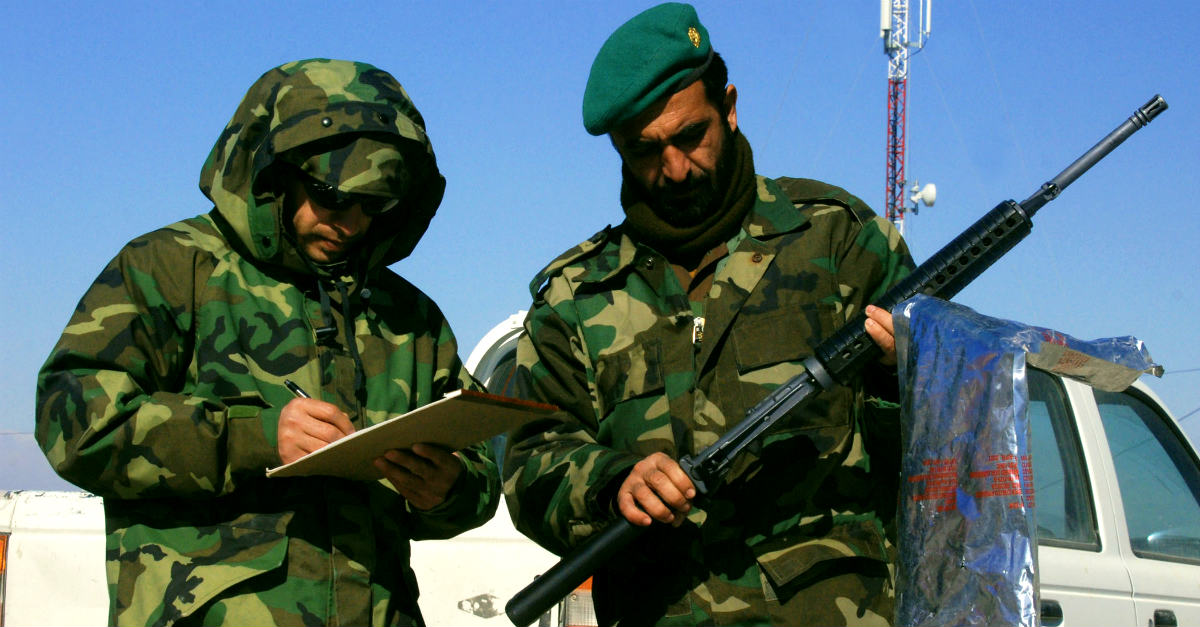
Adopted by the USMC in 1977 and the US Army in 1981, M81 Woodland is a classic camo pattern that remained in use until the mid 2000s. For those that grew up in military families, this recalls Army life in the 1980s like nothing else.
However, M81 Woodland had its limitations. The heavy material was unsuitable for hot and humid environments. During the 80s, the US Army was focused on Europe so this wasn’t much of a concern. However the deployment to the Gulf in the early 1990s brought this limitation to bear, along with the limitation of the military camouflage pattern itself. Work began on new patterns, which would be issued nearly a decade later.
MARPAT
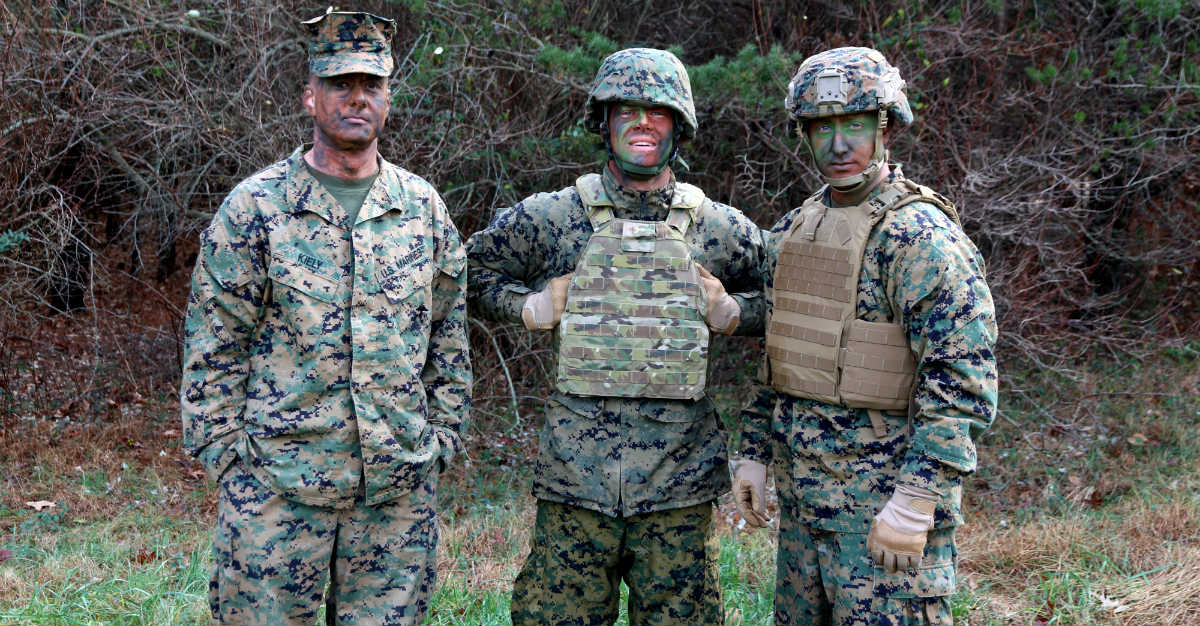
MARPAT is the military camouflage pattern adopted by the United States Marine Corps as a replacement for the Camouflage Utility Uniform (in use since 1977). MARPAT has an interesting history. Developed by designer Tim O’Neill, MARPAT is a digitized pattern, in which smaller pixels take the place of the blobs and swirls found on conventional camo. Based on the successful CADPAT pattern developed for the Canadian Armed Forces, MARPAT rolled out along with the Marine Corps Combat Utility Uniform in 2001. Patented by the United States government, true MARPAT is a USMC exclusive—so much so that the Corps’s Eagle, Globe, and Anchor emblem is woven into the design.
MultiCam
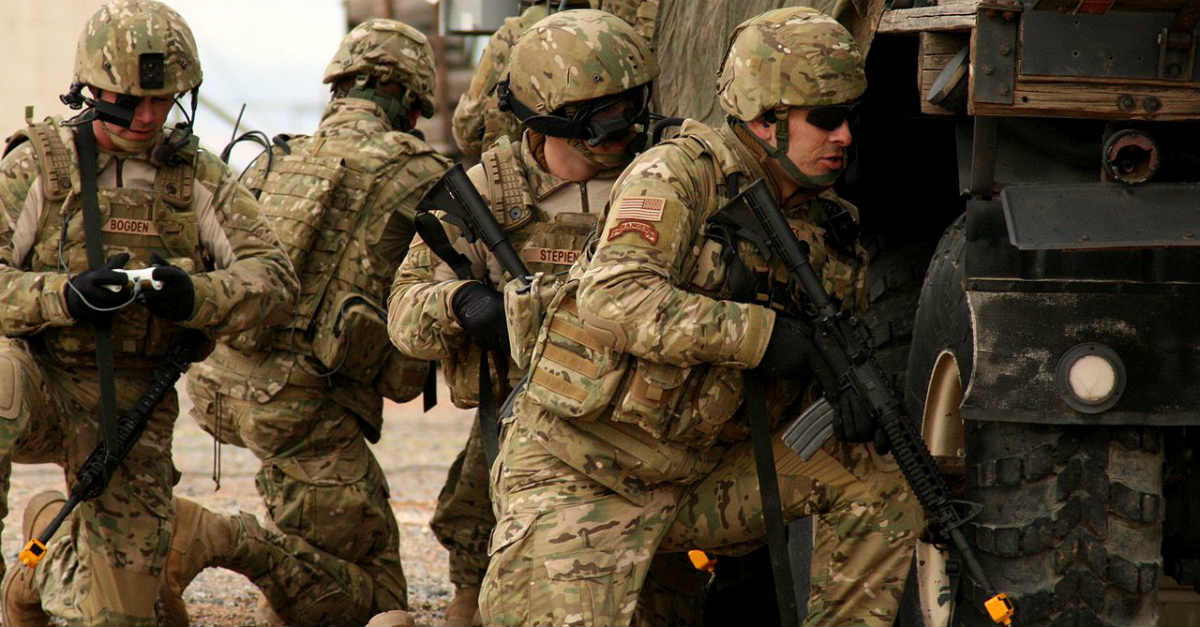
MultiCam is a camo pattern used by the US Special Operations Command since 2010, although its history goes back quite a bit further. MultiCam was originally developed by Crye Precision in 2002, as part of a joint project with the US Army Solider System Center. The intention was to replace the long-used 3-Color Desert and Woodland camo patterns with a more versatile system that would function under a wide range of conditions.
This need became apparent during the first Gulf War, when troops redeploying from Europe had to scramble to find desert pattern gear. Furthermore, the War on Terror necessitated quick deployments to a wide variety of climates. While MultiCam’s Hex triplet pattern may seem a bit unconventional to folks used to traditional camo patterns, it was a welcome change from the controversial Universal Camouflage Pattern (UCP).

